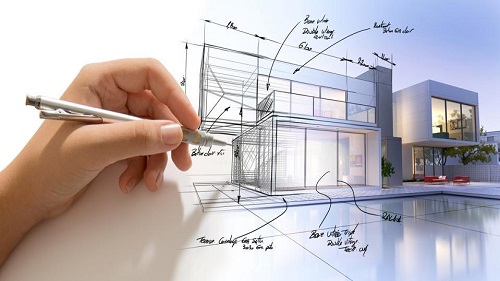
Mortgage Dove
Refinancing Mortgage: The Ultimate Guide
Refinancing your mortgage loan means replacing the loan you have with a new one, usually through another lender. In general, the procedure is quite similar to the traditional mortgage process. Before beginning the process, it's essential to know the procedure and the advantages and disadvantages of mortgage refinancing.
What is refinancing a home?
If you decide to refinance the mortgage on your house, it's basically trading your current mortgage for a new one. It usually comes with a new principal and a different interest rate. The lender uses the new loan to repay the older one, leaving you with just one loan and one monthly payment.
There are several reasons why homeowners refinance their homes. You can utilize cash-out refinance to benefit from your home's equity or a rate-and-term refinance to obtain a better interest rate and/or smaller monthly payments. Refinances may also be used to eliminate an individual from the home mortgage, which usually occurs in the case of a divorce. In addition, you can even include someone else in the loan.
When should you consider mortgage refinancing?
In general, you should consider refinancing your mortgage if you're able to lower your interest rate by a minimum of half a percentage point, and you're planning on staying in your house for a few more years.
There are many reasons to refinance that could benefit financially, including:
- To reduce your mortgage monthly payment by getting the lowest interest rate
- When the refinancing costs could be recouped within the appropriate time frame
- For a loan with a shorter duration, like a 15-year loan that replaces an existing 30-year mortgage, you can pay it off more quickly and decrease the total amount of interest
- For a longer-term loan, like a 30-year mortgage that replaces a 15-year mortgage, your monthly payments can be less expensive
- Switching from an adjustable-rate mortgage (ARM) to a fixed-rate loan -- is a smart choice if you believe rates will continue to climb higher in the future, or if you simply need a predictable monthly payment
- To make the most of your home equity in a cash-out refinance
- Get rid of private mortgage insurance (PMI) if you've accumulated at least 20% equity in your home.
How does refinancing a mortgage work?
Refinancing is usually simpler than buying a house, however, it involves many of the same steps. It is difficult to determine how long your refinance process will be, but the standard timeframe is between 30 to 45 days. Let's look more closely at the process of refinancing.
Applying
The initial step of the process would be to examine the various types of refinancing to determine which one is most suitable for your needs. When you apply for refinancing, your lender will ask for the same details you provided them or another lender when you bought the house. They will look at your assets, income, debt and credit score to determine if you meet the requirements to refinance and pay back the loan.
The documents that your lender might require could include:
- Two most recent pay stubs
- Two most recent W-2s
- Two most recent bank statements
The lender could also request the spouse’s documents if you're married and in a community property state (regardless of whether your spouse is a part of your loan). You may be asked for additional income documents if you're self-employed. It's also an excellent idea to keep your tax returns handy for the last couple of years.
Locking In Your Interest Rate
Once you've been approved, you may get offered to lock the interest rate, so it won't change until the loan closes.
Rate locks can last anywhere between 15 to 60 days. The duration of the rate lock is contingent on several factors, including the location, loan type, and the lender. It is possible to get an improved rate by choosing to lock your rate for shorter time frames since the lender isn't required to hedge against the market for that length of time. Be aware, however: should your loan doesn’t close before the lock period is over, you could be forced to extend the rates lock. This could cost you money.
You may also be given the option of floating the rate, which is not locking it before proceeding with the loan. This can help you get lower rates, however, it also puts you at risk of receiving a higher one. In certain instances, it's possible to get the best of both worlds, with a float-down option. If you're satisfied with the rates you're getting at the time you're applying, it's usually a good idea to lock the rate.
Underwriting
Once you've submitted your application, the lender will begin the process of underwriting . Underwriting is when the mortgage lender checks your financial data and confirms that the information you've provided is correct.
The lender will confirm the information about the property, like when you purchased your house. This process includes an appraisal to determine the property value. Refinance appraisals are a vital element of the process since they will determine the options open to you.
If you're refinancing for cash out, for example, then the worth of your home will determine how much cash you'll receive. If you're looking to reduce your mortgage payments, the value can be affected by the amount of home equity to get rid of private mortgage insurance or be qualified for a specific loan option.
Home Appraisal
Just like when you purchased the house, you need to have an appraisal done before you refinance. The lender will request the appraisal, and an appraiser comes to your home and gives you an estimate of the home’s value.
In preparation for the appraisal, you'll need to ensure that your house looks its best. Make sure you tidy up and finish any minor repairs to make a great impression. It's also an excellent idea to create a list of improvements you've done to your house during the time that you owned it.
If the home's worth is equal to or higher than the amount of loan you wish to refinance, this means that the underwriting process is completed. The lender will notify you of the details of your closing.
What happens if the estimation is not as high? You have the option of reducing the amount you'd like to refinance, or you can decide to revoke the application. You can also opt to make a cash-in refinance to secure the terms of your current agreement.
Closing On Your New Mortgage
When the underwriting process and home appraisal are completed, it's about time to close your loan. A few days before closing the loan, your lender will mail you a document referred to as the Closing Disclosure . It's where you'll find the final numbers that will be used for your loan.
The closing of a refinance is much faster than the closing of a home purchase. It is attended by the people who have the loan and title, and a representative of the lender or title company.
At closing, you'll review the terms of your loan and then sign the documents. At this point, you'll have to pay any closing expenses that don't get rolled into the loan. If your lender owes you, you'll get the funds after the closing.
Once you've completed the loan closing, you're entitled to a few days before you're locked in. If something goes wrong that requires you to not push through with your refinance, then you may make use of your right of rescission at any point before the 3-day grace period expires.
4 Reasons To Refinance Mortgage
There are a variety of reasons why you might consider refinancing your mortgage. We'll look at a few of the main reasons here.
1. Change the term of your loan
A lot of people refinance to reduce their loan terms and save on interest. For instance, you initially took out the 30-year term but could now afford a more expensive mortgage cost. You could refinance your loan into a 15-year term to obtain a better interest rate and pay lower interest overall. You can also extend the loan period to reduce the monthly payment.
2. Reduce your interest rate
Interest rates change constantly. If interest rates are better today than when you first got your loan, refinancing could be your best option. Reducing the interest rate could lower your monthly payments and you'll pay less interest throughout the term of your loan.
3. Switch your loan type
There are many reasons why a different kind of loan could help you. Maybe you initially took out an adjustable-rate mortgage (ARM) to lower interest, but now you want to refinance your ARM into a fixed-rate mortgage while rates are low. Perhaps you finally have enough home equity to refinance your FHA loan to a conventional loan and stop paying the private mortgage insurance.
4. Cash out your equity
Through a cash-out refinance, you borrow more money than you are obligated to repay on your home and pocket the difference as cash. If your home's value is increasing, you could have enough equity to cash out for home improvements, debt consolidation, or other expenses. Utilizing cash from your home can allow you to get money at a much lower interest rate than other types of loans. However, cash-out refinance may result in tax implications.
What does it cost to refinance mortgage?
The cost of refinancing is dependent on several variables, including your lender and your home's value. You should expect to pay between 2% to 6% of the total value of your loan. The benefit of refinancing is that you will not be required to cover these expenses out of pocket, particularly since the adverse market refinance fees were removed.
In certain instances, it is possible to get a no-closing-cost refinance , so you don't need to put any cash on the table. Be aware that the closing cost will be repaid throughout the loan in the form of a more expensive rate.
"Mortgage Dove makes home financing convenient for every American. You can count on us to provide a home buying experience tailored to your personal needs and financial situation. We strive to give you the peace of mind that your home financing goals can be achieved.”

Mortgage®
www.mortgagedove.com



